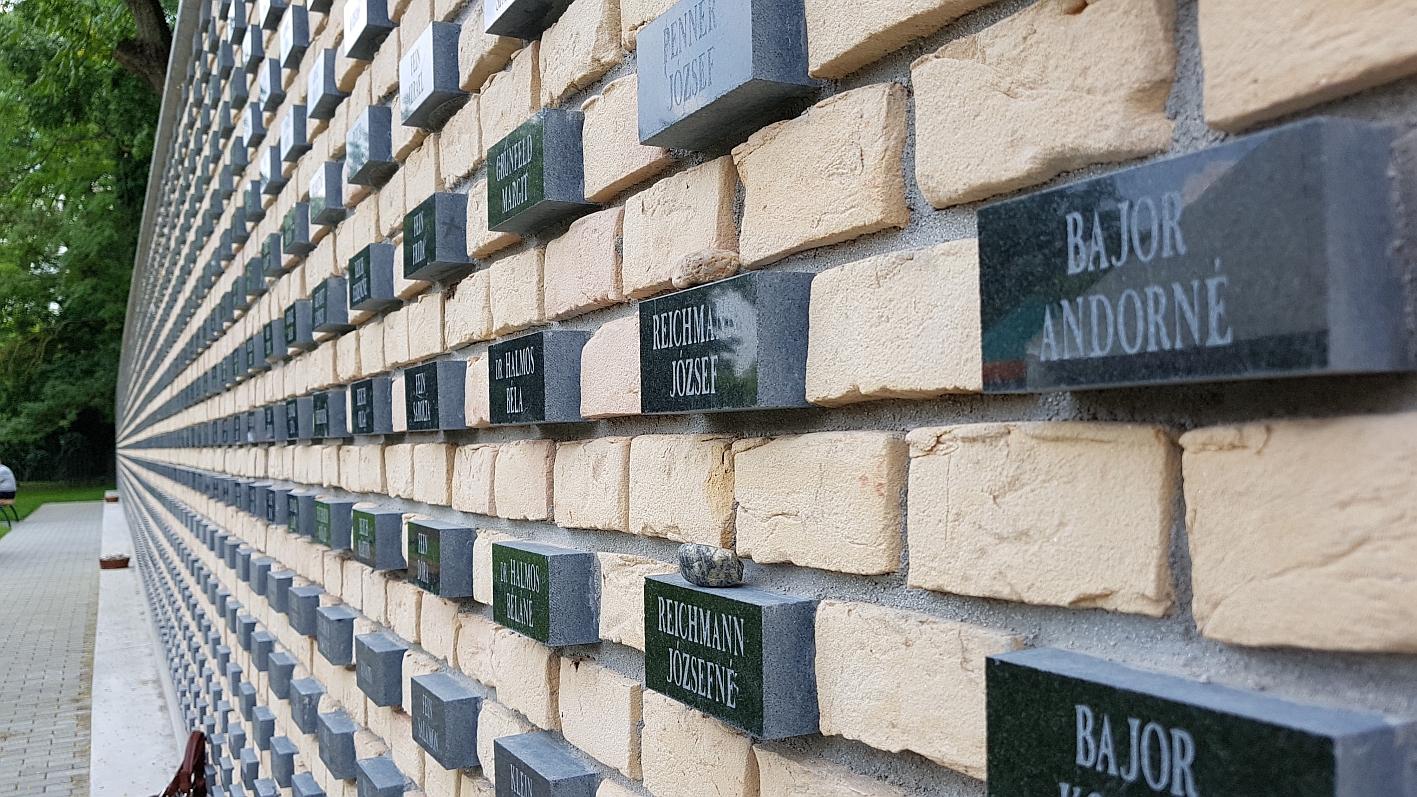New Monument in Békéscsaba, Hungary, Marks 72 Years Since Transport to Auschwitz-Birkenau

The town of Békéscsaba, Hungary, gathered on June 26 to commemorate the 72nd anniversary of the transport of the town’s Jews to Auschwitz-Birkenau by unveiling the first monument to pay tribute to all 3,000 victims.
Békéscsaba is the birthplace of survivor Gabor Hirsch, who traveled to Poland with USC Shoah Foundation in 2015 for Auschwitz: The Past is Present. He was one of four survivors who reunited in Poland to recreate the famous photo they took as children behind the barbed wire of Auschwitz after liberation.
Hungarian teachers who have participated in professional development programs with USC Shoah Foundation International Training Consultant Andrea Szonyi have also developed an IWalk with their students in Békéscsaba. IWalks are walks around historical sites that are accompanied by Visual History Archive testimony clips on tablets/iPads that describe events of the Holocaust that happened in these very places.
Of the approximately 6,200 Hungarian Jews who were deported from Bekes county to various concentration camps and death camps during the Holocaust, about 5,000 were murdered. June 26, 1944, was the date that Hirsch's transport departed Békéscsaba for Auschwitz.
The monument, placed near Békéscsaba’s Neolog Jewish Cemetery, features granite stones engraved with the name of each person who was transported from Békéscsaba and the surrounding towns to Auschwitz-Birkenau in 1944. It is 90 meters long.
At the ceremony, leaders of the local Jewish community, city and government spoke.
Hirsch said the monument is important because only about 40 Jews remain in Békéscsaba today and among them there is perhaps only one Holocaust survivor. The people who will visit the monument will not be families of survivors, but rather the next generation of Hungarians who have little connection to or knowledge of the Holocaust.
“The monument is less for the descendants, it is more for the local population, showing that there was a Jewish life before the war, and thousands of Jews lived in the town,” Hirsch said.
Like this article? Get our e-newsletter.
Be the first to learn about new articles and personal stories like the one you've just read.